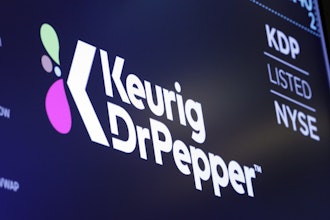
Consumers have increasingly demanded transparency into the food they buy, and the global 5G wireless rollout promises to meet those demands in new ways.
It is important for today’s shopper to know where their food comes from — the push for transparency goes beyond a simple list of ingredients. A 2017 study found a significant number of consumers consider ingredient sourcing information, product shipping details, and other details of the manufacturing process important to their purchasing decisions.
But for farmers, distributors, and everyone else in the massive global food supply chain, transparency can be a challenge. In order to track a food item’s journey from “farm to fork,” complex systems must work in harmony on wireless infrastructure that often isn’t equipped to handle the task. However, the 5G evolution is poised to make end-to-end monitoring of food far easier, creating the reliable and flexible wireless backbone that was previously missing.
To date, the biggest focus for 5G has been on improving the wireless experience for consumers. The technology promises better upload and download speeds, a more reliable network, and reduced latency for users who increasingly use data-heavy apps to stream music, make video calls, and post to a suite of social media services.
However, 5G’s rollout in over 18 countries this year will mean much more than just faster consumer products. The food industry will gain access to a faster, more flexible, and far more efficient means of connecting their operations and enabling data connections at any point in the supply chain via IoT devices. It will also gain consumer trust by storing blockchain. But to reap the benefits of 5G, food operations professionals at every step of the food supply chain need to understand how this technology can help them meet consumer demands for transparency, improve food safety and future-proof their business.
 iStock
iStock
As the groundwork is laid for 5G across the U.S., food professionals should recognize three key ways the technology can help improve their businesses.
- 5G will bolster compliance efforts. In 2020, the FDA will release a Blueprint for a New Era of Smarter Food Safety — a written vision for the future of food that outlines how predictive analytics, tech-enabled tools, and greater traceability will play a role as the food chain further modernizes. Additionally, the Food Safety Modernization Act (FMSA) has already spelled out concrete requirements for food traceability, and big box retailers like Target and Walmart are increasingly demanding suppliers provide transparency into operations. With 5G infrastructure, implementing processes that are compliant with these efforts gets easier. For example, farmers benefit from 5G’s ability to be reliably deployed in more rural environments, allowing them to share data from their operations down the supply chain. Food processing facilities can retrofit their lines with IoT enabled devices that run on 5G networks, allowing them to more accurately monitor conditions and possible anomalies in their processes.
- 5G enables more safety and accountability. Food recalls made headlines in 2019. From several contaminated batches of frozen berries to E. coli tainted romaine lettuce, these outbreaks sickened dozens. With millions of Americans affected by a foodborne illness every year, 5G can contribute to the public good by helping trace the origins of these illnesses.
In rural areas, systems can be deployed in fields and farms that track food from its original source. If a food product is suspect, then tracing the problematic food back to the specific field or even row of crops may be possible. 5G may even prevent recalls from happening in the first place. When the technology is deployed across fleets of delivery trucks, IoT sensors can record information such as temperature variations that often lead to contaminated food, meaning potentially tainted food never makes it to the shelf in the first place.  iStock
iStock
But 5G plays a role beyond the consumer in the food industry. 5G applications and systems can make an operation less wasteful, ultimately saving business owners time and money. The technology promises a future where a cabbage farmer, for example, can use predictive analytics to track soil temperatures, weather conditions and water levels to maximize their yield. A 5G network will allow fleet managers to monitor the status of deliveries and get near real-time information on shipped products. All of these potential applications will enable a more streamlined, sustainable system that will benefit those who make early investments in adopting the technology.
5G has the potential to disrupt nearly every industry, but few are as important or as vital as the global food supply chain. To meet the demands of consumers, as well as expanded regulations for suppliers by government and private enterprise, food suppliers need to be at the forefront of incorporating this technology into industry processes.
Kevin Beasley is chief information officer at VAI.
























